Britain has contingency plans in place to “rapidly increase the number of front-line pilots in the RAF if required,” according to Defence Minister Louise Sandher-Jones, who confirmed the policy in a series of written parliamentary answers.
Responding to questions from Graeme Downie MP, the minister said that while details of those contingency measures remain classified, the RAF maintains flexibility to adjust pilot throughput and front-line manning to meet operational needs. “Details of specific contingency plans are not released for operational and personnel security reasons,” she wrote.
Sandher-Jones explained that the Royal Air Force continuously manages its training pipelines to align with forecasted front-line demand for fast jet, multi-engine, and rotary pilots.
“The RAF actively manage the pilot training pipelines to ensure that trainee flowthrough is kept to an optimum and meets the front-line requirements,” she said, noting that both the rate and volume of qualified aircrew are calibrated against projected operational needs in the coming years.
The minister also addressed Downie’s question about how many fast jet pilots are expected to complete training and enter service in the next five years.
“The number of Royal Air Force fast jet pilots that are expected to complete training and commence Operational Conversion Units is based upon the front-line demand for qualified pilots in future years,” she said, adding that such figures will not be published as they “may provide tactical advantage to hostile forces causing operational and personnel security risks.”
Downie also sought data on the number of pilots who have completed training in the last five years, broken down by aircraft and service type. Sandher-Jones again declined to release those figures for security reasons, but reiterated that the RAF’s training system is structured to sustain operational output and readiness.



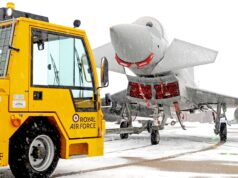
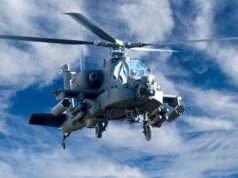
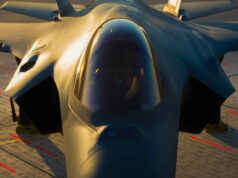
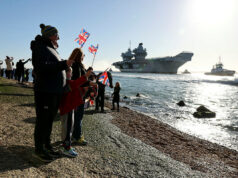
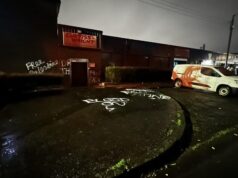
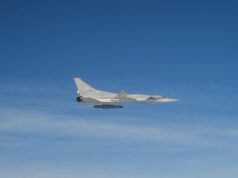
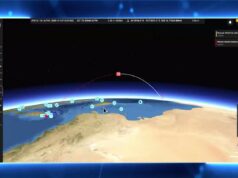
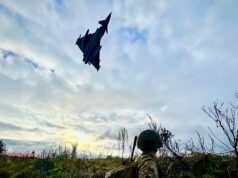
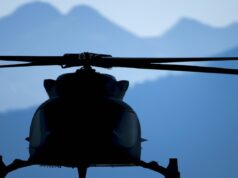

I’m sure they do. A mixture of calling up recently retired pilots and advancing training schedules for those in training BUT you can’t put them in aircraft that don’t exist. The RAF simply does not have enough fast jets, tankers or ammunition to meaningfully expand in short order.
There is the issue.
The actuarial approach to frames where every drop of activity is squeezed from them with an empty spares bin is the definition of inability to surge.
They’ll go cap in hand to the USA for reserve F16s and maybe F15s. The USAF has hundreds of stored airframes which they will gladly charge the UK through the roof for.
Makes you think maybe we should have kept the typhoon tranche 1s doesn’t it?
I doubt it as we have no training pipeline or supply chain for those.
Depending on the circumstances, I’ve always imagined that in a UK specific emergency, that didn’t necessarily involve our allies (e.g. another Falklands scenario) the UK would pay over the odds to purchase airframes from allies as an UOR. For example, additional F35Bs purchased from USMC, Italy or Japan; or Typhoons purchased from other operators. Even Tornados might be useful for some missions, with many vets having a rusty but still useful knowledge of how to operate and maintain them.
In a wider international emergency situation, I think the UK is banking on its geographic position buying it sufficient time to get it’s act together and build new kit.
Neither of these are necessarily good plans, but have probably been used as excuses by ministers for not spending money to maintain large active or reserve fleets.
Carrickter, I think we only deployed 28 airframes for the 1982 Falklands Conflict. So, we surely have enough airframes to deal with any UK-specific situation, which is unlikely to be bigger than that was.
The real issue is whether we have enough airframes of all required types to deal with a large and protracted multi-national operation.
I agree, we have a vast lack of aircraft not pilots. The reason we don’t have enough pilots is because we don’t have enough airplanes. Pilots can be trained two years at a cost of £5m each (most of that cost is the cost per hour of the airframes themselves)
From ordering a plane on an existing production line it takes five to seven years for a delivery and costs £100 million.
If the plane is not in production it will take twenty years and costs £20 billion.
We are not in the Battle of Britain and we need to stop thinking that way. Pilots are easy to get planes very difficult.
In a war if a plane is shot down there is a 80% chance of survival for the pilot and zero chance of the plane.
We need more planes than pilots even if the planes are just sitting in storage they are useful.
The alignment is with the US and has been since 1945.
In times of emergency we can call on their industrial capacity.
Yhere is no difference now. It’s the state of play, end of
USA is no longer reliable so not the same as the last 80 years for UK RAF. European problems are no longer seen as US Problems. The Munich conference made that clear as day, and the recent USA military leadership event made the focus on domestic and CCP problems explicit. Europe was nowhere.
Expecting a post WW2 response is not realistic.
I don’t think that’s true. Their interests and our interests are no longer perfectly aligned, but we still have huge areas of common interest. Europe is understandably focused on Russia as the main threat in the world, whereas the US is understandably pivoting towards the Chinese threat in the Pacific. The Munich conference was simply a wake up call for Europe, which is slowly sinking in to European politics. Undoubtedly Europe is moving towards the right of politics due to the catatrophic failure of left wing policies on several fronts. It’s not going to be smooth though, especially during the transition when some countries still have left leaning governments whilst others have already moved to the right.
The US is still providing the bulk of deliveries of advaced defence hardware to both Ukraine and ENATO allies, and a significant proportion of other defence supplies. I know the term is a bit antagonistic, but Europe has had a ‘free ride’ on US defence expenditure for a long time, and it’s a painful transition back to spending levels more appropriate for the threat levels we currently face.
I think a serious issue is that the USA no longer has any real perception as to what its own interests are.
See their demolition of their soft power and influence worldwide, and their burning down of their relationships with every ally, Pantomime Pete as their Def Sec, and the country being run by a criminal lunatic on a random walk – who is more interested in lining his own pockets that protecting the USA.
The myth of a European free ride is born of willful ignorance of US history; intent and design of NATO to be in US control because it is the largest funder eg Supreme Commander Europe is always American.
That’s still only 3.4% GDP on NATO and the rest of US Defence spending on other commands.
The facts that the current administration prefers to ignore are on the NATO website that shows the 2014 2% GDP Defence spending agreement is on track (2.16% avg). It’s irrelevant that Luxembourg doesn’t make the target when most do. So just a dog whistle for the poorly educated.
The reaction to Munich summit in Europe is more Defence spending in Europe so the US Military industry will see that impact, mainly in the red states. It seems that they didn’t know a “really great deal” when they were getting one.
Of course #47 will say 5% GDP is an agreement that only he could do but these are long term contracts that play out long after his term. So nobody knows the full impact.
The indicators are that arms procurement from USA is no longer the default choice though committed spending like F35 are past the decision point for many countries in Europe. Where alternatives exist in Europe or licensed manufacturing is agreed, that’s jobs, profits and taxes for Europe as their taxpayers expect.
Independence from America is going to happen. That cost is worthwhile.
Lonpfrb, hopefully the US Adminstration is only going to be (potentially) unreliable for another 3 years. However, we do need to be able to source all of our military equipment from British and European suppliers in the future.
The administration is already talking out loud about how he continues beyond 2028 despite term limits. Disregard for the law and Constitution would do that.
Medical consensus is that his diet will likely prevent that but who knows..
Do we have enough pilots to crew all the fighter/transports/survallince/helo that we have, considering in all out war the maintance cycles would be reduced freeing up frames.
I’d say yes, considering there are so few of them.
Is the data available on how many fast jet trained pilots there are or is it hidden behind national defense reasons?
I’ve not seen any data on that. I recall there was a Commons answer once from a few years ago on total pilot numbers of all types, but not individual categories.
HMG would probably say it prejudices the effectiveness and security of the forces.
No, it exposes HMG lack of engagement.
I guess the other question is in an all out war scenario, with modern aircraft, which needs more down time between missions the planes or the pilots.
Could the very large BAE commercial fleet be militarised. Imagine an Airbus or Boeing airliner equipped with a Future radar MK2 (about to equip typhoon) fitted to a civilian airliner acting as a missile truck. A 737 could conceivable carry dozens of Meteor, AMRAA, ASRAAM and have a laser point defence system to defend itself. It’s obviously a huge easy target so would be an attritional loss. So long as minimally crewed and modern escape systems are in place so the crew has a high probability of escape, it might be a viable wartime option.
A missile air-bus! Why can’t they just order a batch of 20-30 Typhoon in the interim? Join Italy, Germany and Spain. Good for UK-Euro industry and relations. Common sense choice, isn’t it? And, or upgrade the T1 or other T2/3s? Just hope its not too little too late.
No not really in this day and age. The reason is an airliner has a massive radar cross section, Granted its not as big as the Tu-95/142 Bear. But they will be similar to the B52 in most respects. The tubular structure and 90 degree wing/body fittings give it a very large radar cross section. However, the main issue would be the engines and the very large fan section of the turbofan. These will give off a unique Doppler signature that can be detected 100s of kilometres away. If say you wanted to use an A320, fitting it with ECRS Mk2 would not give it an advantage, as it can still be detected before it sees other objects.
To make an airliner more effective in this role, you need to fit them with a very long range radar like the E7’s MESA. As that allows it to detect targets before it can be detected by a fighter’s active radar. But also gives it the opportunity to launch long range air to air weapons to match their max effective range. Or preferable have its own armed loyal wingman that are stationed up-threat of the A320. To maximize the range of the weapons and to reduce the risk to the A320.
Er, what ‘very large BAE Commercial fleet? The BAE Commercial fleet consists of two Embraers, one Boeing 737 and a DA-42 Twin Star?
Really not sure what you are on about here.
Doubt.
They say they can rapidly train more pilots if required.
It IS required! Train more now and buy more planes for them now.
Don’t wait until it starts raining to build the bloody ark!
Unless I’m mistaken, the RAF have the opposite problem to the navy; pilots aren’t getting enough hours on airframes, and there simply aren’t enough aircraft and spares available.
Why train more pilots to sit around, when the focus should be on increasing the available fleets of aircraft
Yup they are going through training and then flying desks until the specialist slots become available.
Some are leaving, like an acquaintance, whose time was up before he got a slot! He walked into a civilian job.
So there is a lot of bleed at that level.
More frames and an ocean of spares are needed. All the bits that fail regularly need to be to hand in quantity. A mindset change is required in terms of forward positioning stocks.
Actually it is perfectly possible to a pay-when-expended model so MoD pays for the stock which is held on base. There are plenty of commercial models like this.
You said it…”mind-set change”!
Agreed with what you say but both RN and RAF pilots fly US aircraft too.
There must be an ability to claim mire in a time of need!
Our ends are the same whether we like it or not
@Dave
You’re thinking about exchange posts flying USA aircraft, not OCUs that are in USA flying UK aircraft?
It’s been proven during the RF invasion of Ukraine that airtime so training and exercises matter since the numerically superior RF air have failed to achieve air superiority never mind dominance. Lack of hours, and poor doctrine the suspected causes. Dropping glide bombs from 50km inside RF airspace looks like a weak approach.
Your Airforce is weak ruzzia, it’s weak.
Be good if Ukraine coukd knock those aircraft out before they release those glide bombs. Only 50km inside Russia doesn’t seem that far to reach but if there’s no missiles to tackle this its an open door. Wonder if laser DEWs can knock these GBs out?
The Spiderweb operation was intended to destroy the strategic bomber force at the very remote bases that they hide in before flying to the Caspian Sea to launch cruise or hypersonic missiles into Ukraines critical infrastructure. Presumably that was the highest priority given the difficulty of repair and their importance. That operation appeared mainly successful at 5 of 6 sites attacked and many FPV videos or satellite images to evidence damage. Worth noting that none of the RF strategic bombers are in production being Soviet era assets.
The FAB500-3000 glide bombs are typically dropped by Su24 that are much closer than the strategic bomber fleet. So attacking those on the ground is a feasible mission, and part of the reason why Pansir, S400 and other GBAD are frequent targets for AFU. With GBAD absent the AFU UAV mission packages can expect some success against RF Su24 on the ground. HAS seems to be rare so those Su24 are vulnerable..
FAB500 is hard to hit since no IR seekers work and radar seekers are tested too. Logically the larger GBs have a bigger RCS but its hard to have the right launch equipment in the right place to defeat them. Too much waiting around in range of ISTAR UAVs!
Do they have plans to rapidly expand aircraft numbers?
I hear Airfix have some good bulk offers?
That’s probably the MoDs plan, its not like you can quickly roll a Typhoon or F35 off a production line.
Be serious please.
Better get on with it then given it takes years to train a new pilot, even refreshing and converting reserve pilots to current aircraft is not a quick fix.
Umh, train more pilots?
They need to choose a replacement for Hawk and get it into production in numbers as quickly as possible, also order more T-6. And as well at increasing training, ensure that some are available for operational pilots to get flying hours in if there aren’t enough Typhoons and F-35s. No-one joins up as a pilot to do paperwork, important as it is. I appreciate that combat aircraft are expensive to buy and maintain and simulators are very good these days. But pilots want to fly. and getting a few hours a week in a T-6 or M-346 is going to improve morale and retention whilst also enhancing basic flying and navigation skills.
Agreed.
Something is a lot better than nothing to prevent skills fade and as you say retentions which are key.
I assume man hundreds are flying a desk in other roles and can be called back within a set period?
Does the RAF have a Army type Regular Reserve liability, calling retired pilots back within a set number of years? If so, I have not heard of it, and is that even feasible given the complexity of aircraft operations?
Succession jobs as Airline pilots don’t make flexible Air Reserve easy, even if the cobwebs could be blown away (currency, type rating).
Should that be easier with an SDR whole of nation approach, yes, probably. Simulator time is relevant for commercial and military currency.
Thanks.
Hiya DM
I never really understood why the RAF did away with reserve pilots (was this in the 1960s)? I reckon there is a large pool of ex RAF jet jocks who’d jump at the chance to get current again on Typhoon on weekends. When not baying the bills as commercial pilots for BA, off course! I’m a big fan of a pilot reserve pool assigned to a each operational sqn. A valuable asset to scale up ops when a crisis arrives.
I’m sure a fair number of older RAF jet pilots transition onto Transports, as they get older. I recall from my experience it was common to have pilots on mandatory “ground tours” (mostly flight ops related ground tasks). I’m pretty sure they were permitted to stay current type though – a few hours a month.
Hi mate.
Not an area I have any knowledge on,apart from that a reserve Sqn for AT pilots already exists.
Yes, I agree, I winder what the issues are around forming such extra Squadrons, apart from that it would cost HMG money!
They did away with reserve pilots in 1957 and stopped reserve pilot training in 1953, so a LONG time ago! The reserve Royal Auxiliary Air Force squadrons were disbanded in 1957 because with the end of national service the supply of pilots was going to dry up completely and there were going to be virtually no pilots available.
cheers for that Enobob , interesting insights .
How about rapidly expanding the number of combat jets available for all these pilots to fly??
Means spending money.
This government aren’t invested in that if they can get away with it.
Then you need to reactivate one of the fast Jet Stations, Leuchars or Leeming.
Meant to add, which costs wven more money.
If by frontline they’re including P8s and Voyagers then sure, they can increase RAF pilots rapidly by enlisting civilian pilots already qualified on type.
Who are not trained on the militarised versions…..limits due to goodies…..evasive flying….using DAS….cooperation with other units…..
Tranche 1 typhoons should not have been scrapped but put in to mothballs and kept air worthy. Penny pinching treasury puts this country at risk.
There are a surprising number of RAF pilots on secondment with BAe or other countries who conduct contracted training and aircraft piloting for those countries.
They will along with their families, be called back home.
Look to the middle east and see who operates the same fighter aircraft as the UK
Let’s hope that those pilots return to the UK in the planes that they’re currently flying, otherwise they might be sat twiddling their thumbs!!